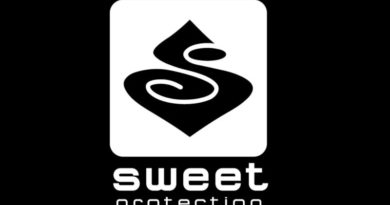Comment: Make your staff wage bill go further by investing in clever Epos
Words by David Gaule at Citrus Lime
We’ve all heard it before – ‘time is money’! Let’s explore how true this is in a retail environment.
Typically, your product is tangible, it comes in at one value and goes out at another, with the difference being your profit, right? Obviously tax takes a chunk of that gross profit but what about considering your business’ net profit, after running costs such as business rates, utility bills and staff? Hopefully you’ve picked a premises you can afford based on projections and have a keen eye on aspects such as merchandising and promotions to optimise your turnover per square metre. Utility bills are a difficult one – obviously you can be frugal with electricity, gas and water; maybe you’ll even look at adjusting your opening times to yield a greater return but that’s about all you can do. So what about staff? What do you pay staff for? Aside from knowledge and skillset, it’s essentially their time that you’re paying for. If you consider this as a cost split across every product you sell, how do you maximise your return on this investment?
Don’t get me wrong, I’m not suggesting staff are a waste of money or that you should pay your staff less! Successful retailers require good people. We’re a long way from ‘Judgement Day’ or even the day when cycle retail is entirely automated. Consumers don’t just buy products, they buy a service level, convenience, expert advice, trust and charisma.
The key to increasing return on time spent is increased efficiency – getting more of the same done or doing something more worthwhile within a specific time period. Every now and then, it’s worth having a think about how you can make your retail operations more efficient. It’s fair to say that scheduled (or repetitive) and reactive tasks often don’t mix. If delegated to the same person, one will often cause the other to suffer. For example, placing purchase orders while trying to answer the phone promptly; or setting up your products online and pausing to serve customers when required. On a busy day in the shop, understandably, we all know what takes priority. But what of the sales you missed (online and in-store) when the customer couldn’t buy what they wanted because it hadn’t been ordered or wasn’t listed online yet? It quite literally pays to regularly take time out from the daily grind to look at the bigger picture.
When factoring labour costs into the profit margin of every product, if you can reduce the total time (and thus cost) it takes to sell a product, you increase your net profit margin. I’m not advocating spending less time with customers on the shop floor. In fact, it’s quite the opposite – if your staff can spend less time in the process of making a product available for sale on the shop floor or online, you’ve spent less of their hourly wage on selling that product. So your staff can spend more time (investing the cost of their hourly wage) on the shop floor with customers, or wherever else you deem more worthwhile. What roles do your staff fulfil? Generally, the answer includes buying, goods-in, EPOS/website admin, merchandising, marketing, shop floor sales, managing customer orders and expectations, picking/dispatching online orders and everyone’s favourite retail quiet-time filler… cleaning.
So, when you’re taking that step back from the daily grind, ask yourself “Which of those tasks directly drive the most turnover?” Then think carefully about how you reduce the time spent on low turnover tasks and direct your staff’s efforts to the higher turnover tasks. Try to think about the most direct impact. For example, tasks like visual merchandising, marketing and sales, all have a direct impact on consumer buying decisions and therefore your turnover. Conversely, ‘EPOS admin’ has a less direct impact on your turnover and is often more time consuming. That said, ‘good data in = good data out’, so it is absolutely necessary to ensure accurate reporting.
A lot of retailers who are new to EPOS often feel that since they got it, they spend more time in front of a computer than on the shop floor, it’s important to remember the main benefit of EPOS is better-informed business decisions that lead to increased turnover and profit. You’ll find the return from those decisions vastly outweighs your investment in time (staff wages) and system costs. Utilised correctly, EPOS undoubtedly facilitates increased success.
However, you definitely don’t need to let EPOS admin consume your staff’s time and distract them from those more profitable endeavours! We often look to technology to save us time, so whether it’s EPOS, ecommerce, accounting software, a van or a power tool in your workshop, carefully consider its cost compared to equivalent alternatives. Does the increased cost of it offset what you would otherwise pay staff to complete the task without it? For example, if you’re moving stock or making local deliveries in a van, does it make sense to spend slightly more on a bigger van to transport more in one trip, or would it be more cost-effective to pay for your staff and the additional fuel required for multiple trips?
Consider that cost as a chunk of the profit margin for each product involved. Similarly, if an EPOS system could import directly from your suppliers, your product records and continuous updates to their cost prices and MSRPs, with some simple clicks and no need for Excel wizardry, how much time would that save your staff per month? What’s the value of that time? Consider that if the technology saves you enough time and therefore cost in wages, to pay for itself, not only do you lower your labour cost per product, you can direct your staff’s new-found free time to those tasks that yield a better return, thus making them more profitable. If it’s your own time that you’re getting back, maybe you can simply adjust that work-life balance by getting in a few more rides.
You can read more handy tips over at CitrusLime.com.



